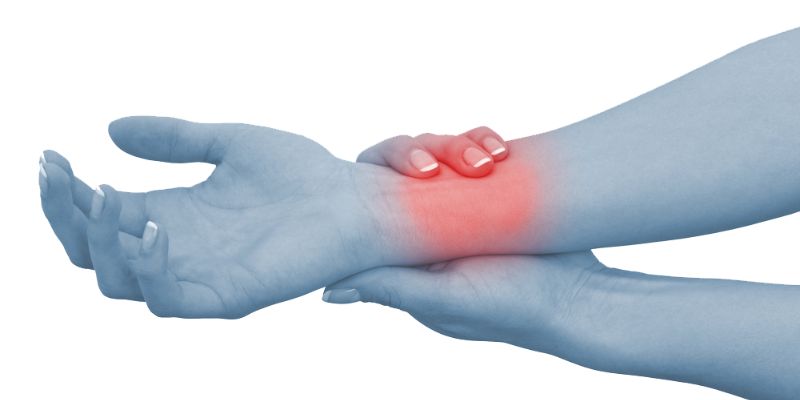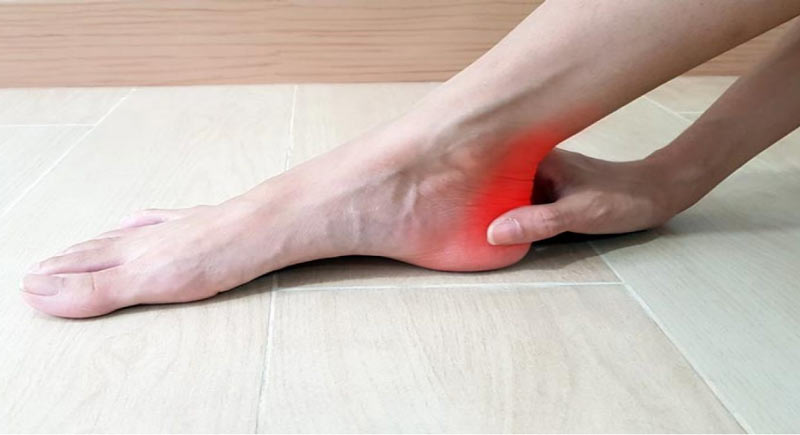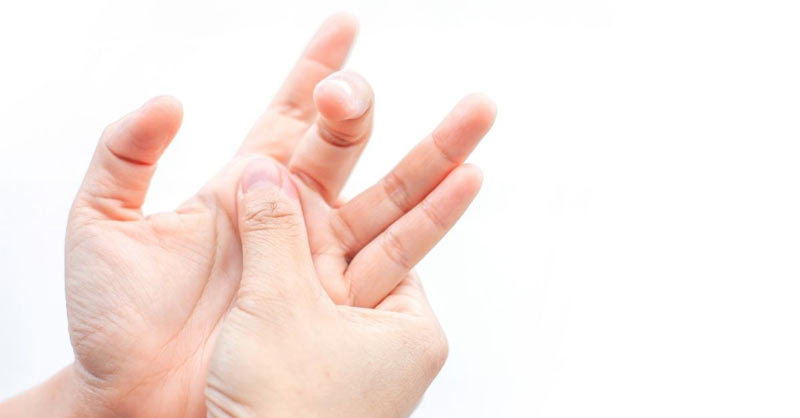Are you dealing with pain or discomfort in your wrists? This type of joint pain is too common and can affect anyone, from athletes to desk job holders. But what causes wrist problems, and how do you get lasting relief?
In this blog post, we’ll discuss the physical indicators of wrist pain and the most likely underlying causes, so you are better informed about what might be causing your discomfort. We will also explore treatment options that could provide real results now and in the future!
Wrist Pain Definition
Wrist pain is a common condition ranging from mild to severe and can affect adults and children. It can cause the wrist to be swollen, tender, or stiff when moving your hand or gripping objects. Symptoms of wrist pain include swelling, redness, numbness, tingling sensations, and weakness in the affected area.
Wrist pain may also occur from overuse of certain muscles or repetitively using your hands in an unusual movement. It's important to understand the underlying causes of wrist pain to get the proper treatment for relief.
Causes of Wrist Pain
Tendinitis
This type of wrist pain is caused by inflammation and swelling of the tendons around the joint, which can be triggered by overuse or repetitive motion. Tendinitis commonly affects the wrists and can cause pain and tenderness around the joint, swelling, and stiffness.
Treatment for this condition typically involves rest, medications to reduce inflammation, physical therapy exercises to strengthen the muscles, and a splint or brace to help protect the joint from further damage.
2. Arthritis
Due to its long-term effects on joints, arthritis is another typical reason why adults experience wrist pain. Osteoarthritis and rheumatoid arthritis are two of the most prevalent kinds of arthritis that can affect the wrist.
Osteoarthritis causes cartilage between bones to break down, resulting in chronic pain, while RA is an autoimmune disorder that causes inflammation throughout the body. Treatment for both conditions often includes medications to reduce inflammation, physical therapy exercises to strengthen the muscles around the joint, and surgery may sometimes be necessary.
3. Carpal Tunnel Syndrome
Carpal tunnel syndrome (CTS) is caused by wrist compression of the median nerve. This can cause pain, tingling, numbness, or weakness in the hand and fingers. Treatment typically involves immobilizing or wearing a splint on your wrist at night, applying heat or cold packs to reduce swelling, taking anti-inflammatory medications, doing stretching exercises for your wrists and hands, and possibly having surgery if all other treatments fail.
4. Fractures
Wrist fractures are a common injury that can cause pain, swelling, and bruising in the affected area. This type of injury is typically caused by trauma such as falling on an outstretched hand or direct contact with the wrist. Treatment for this condition usually involves immobilization with a cast or splint and possibly surgery if the bone fragments need to be repositioned.
5. Sprains
Sprains are another injury that can cause wrist pain due to ligament damage. This can occur when the wrists are overextended or twisted beyond their normal range of motion.
Symptoms include swelling, tenderness, bruising, and difficulty moving the joint. Treatment for sprains includes rest, ice packs to reduce inflammation, compression bandages to help support joints, and physical therapy exercises to help strengthen the muscles.
6. Tendonitis
Tendonitis is a condition that affects the tendons in your wrist, which can be caused by overuse or repetitive motion. Symptoms of tendonitis include swelling, tenderness, and stiffness of the affected area. Treatment options for this condition typically involve rest, medications to reduce inflammation, and ASA physical therapy exercises to help strengthen the muscles around the joint.
7. Ganglion Cyst
Ganglion cysts are sac fluid-filled sacs that develop on or near joints in your wrists or hands. These cysts can cause pain and discomfort if they press against nerves, tendons, or ligaments.
Treatment for this condition usually involves immobilizing or wearing a splint on your wrist at night, applying heat or cold packs to reduce swelling, taking anti-inflammatory medications, doing stretching exercises for your wrists and hands, and possibly having surgery if all other treatments fail.
8. De Quervain's Syndrome
De Quervain’s syndrome is when tendons near the thumb become inflamed due to overuse from repetitive motions such as typing or lifting heavy objects. Symptoms of this condition include pain and tenderness around the thumb when moving away from the body or towards the opposite hand.
Treatment typically includes rest, ice packs to reduce inflammation, physical therapy exercises to strengthen the muscles around the joint, and surgery may sometimes be necessary.
9. Osteoarthritis
Osteoarthritis is a condition that affects the joints as they age due to the breakdown of cartilage. This can cause pain, swelling, tenderness, and stiffness in your wrists or hands. Treatment options for this condition usually include medications to reduce inflammation, physical therapy exercises to help strengthen the muscles around the joint, and sometimes corticosteroid injections or surgery may be necessary if all other treatments fail.
Trigger Finger
A trigger finger is a condition in which one of your fingers becomes stuck in a bent position and can't fully extend without assistance from another hand or object. This condition causes pain and discomfort when bending and straightening the affected finger. Treatment for this condition usually includes rest, physical therapy exercises to help strengthen the muscles around the joint, medications to reduce inflammation, and surgery may sometimes be necessary.
Getting relief from wrist pain can be challenging, but you can get lasting results with proper diagnosis and treatment; if you are experiencing any of these symptoms or have been diagnosed with a condition that could cause wrist pain, it’s important to speak with your doctor about treatment options that will work best for you. With the right approach, your discomfort should improve, and you can enjoy activities without persistent pain or stiffness in your wrists!
FAQs
Q: What are the main physical indicators of wrist pain?
A: The most common signs of wrist pain include stiffness, tenderness, and swelling around the joint. Pain can also be a burning sensation or numbness in the affected area. In more severe cases, you might struggle to move your wrists without experiencing sharp pains. You may even hear cracking noises when moving your wrists, which could indicate that an underlying issue has caused irreparable damage to the joint.
Q: How can I find lasting relief from wrist pain?
A: Managing certain lifestyle factors, such as maintaining a healthy diet and exercising regularly, can help to reduce pain in your wrists. Consider using braces or splints to provide additional support when engaging in activities requiring many fine motor skills. Physical therapy or other non-invasive treatments like ultrasound and laser therapy may reduce inflammation and alleviate pain. If you’re experiencing severe discomfort, you should speak with an orthopedic doctor who can recommend the best course of action for your particular situation.
Q: What type of medical specialist should I seek for wrist problems?
A: An orthopedic doctor specializes in the diagnosis and treatment of misdiagnosing and treating those affecting joints, like the wrist. In some cases, they may refer you to another specialist, such as a neurologist or rheumatologist, depending on your symptoms. It’s important to remember that only an experienced medical professional can provide you with an accurate diagnosis and effective treatment options.
Conclusion
Wrist pain commonly affects anyone, from athletes to desk job holders. It can be caused by many underlying issues, such as carpal tunnel syndrome, sprains, tears, tendonitis, ganglion cysts, de Quervain’s syndrome, osteoarthritis, or trigger fingers. Understanding the causes of your wrist pain and the various treatment options available will help you get long-term relief to enjoy activities without discomfort or stiffness in your wrists.






